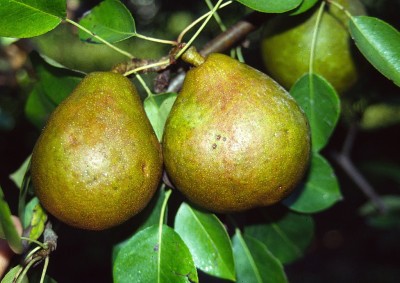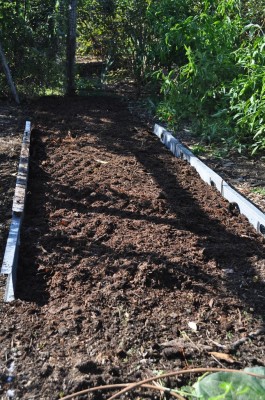SWEET POTATO FOOTBALL & PEARS GALORE
/1 Comment/in Gardening/by Lee A. ReichLance the Plumber is also quite a good gardener; I’ve seen his garden. So I had some faith in his recipe for growing sweet potatoes: Make a circle of fencing a couple of feet across, fill it with soil, and plant. The raised cylinder of soil, being warmer than soil at ground level, would be much to the plants’ liking.
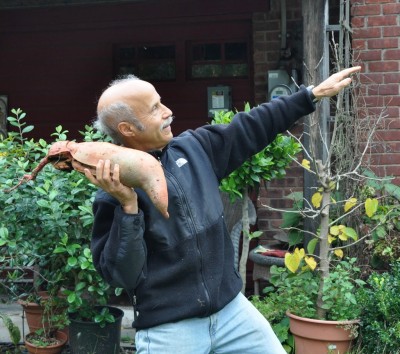 I eat a lot of sweet potatoes but have never grown them because summer weather here in the Hudson Valley isn’t quite warm enough for best yields and because the trailing vines take up a lot of space. Still, Lance’s method seemed worth a try — with some “leafy” modifications.
I eat a lot of sweet potatoes but have never grown them because summer weather here in the Hudson Valley isn’t quite warm enough for best yields and because the trailing vines take up a lot of space. Still, Lance’s method seemed worth a try — with some “leafy” modifications.Every autumn I get truckloads of leaves dumped at a holding area where they sit to let snow, rain, heat, and time reduce the volume and bring about decomposition to create an ideal mulch. I spread that mulch the following autumn. (Freshly fallen leaves are also a good mulch but tend to blow and are too fluffy for easy handling.) So, methinks, “That leaf pile just sits there from spring through autumn; why not plant sweet potatoes right into the pile in spring?” It was worth a try even though sweet potatoes don’t like soils having abundant fresh organic matter. The leaf pile was pure organic matter!
I tried this on a small scale last year. Mice ate the potatoes which, anyway, were few because I got the plants in late and sweet potatoes are a long season crop. I did salvage cuttings from the vines, which root easily, and carried them over last winter on a window sill to make plants for this year.
This year’s leaf pile was further from the stone wall that mice evidently call home, and potted plants went into compost-filled holes hollowed out into the pile. All summer the vines grew, and grew, and grew. Frost, anathema to sweet potatoes, is imminent so yesterday I decided it was time to start grubbing into the pile to look for sweet potatoes. I found a few small and medium-sized tubers, one of which had been gnawed by mice. Not very encouraging.
Wandering past the pile a couple of hours later, I spied what looked like a large butternut squash starting to emerge from the pile. It was, in fact, a giant sweet potato tuber, a couple of feet long and a few inches across, that had formed where the vine had rooted as it sped along atop the leaf pile. Then I found another humongous tuber. And another, as well as some rationally sized ones. Success. I can’t wait to show them to Lance.
—————————————————-
For a variety of known and unknown reasons, this year was good for pears. Not just here, but generally in the northeast, at least judging from reports from a number of people. Spring weather was ideal for pollination, with no late frosts once weather started to warm. I had a number of varieties in bloom so cross-pollination was good. And for some reason, despite alternating periods of rain and drought followed by too, too much rain, the crop developed and ripened nicely.
Of all the pears I grow, the best-tasting is the variety ‘Magness’. It takes awhile to begin fruiting and then doesn’t yield well or consistently, or keep very well. But when ‘Magness’ is available, there’s hardly reason to eat any other pear. (Except for ‘Comice’, which is the pear usually grown in the Pacific northwest and packed into fancy fruit gift boxes; ‘Comice’ allegedly doesn’t grow well in the northeast. ‘Comice’ is one parent of ‘Magness’.) My two ‘Magness’ trees bore abundantly this year, I harvested the fruits just as the first pear dropped, kept them refrigerated for about a month, and now eat them after a day at room temperature. The flesh is juicy, sweet, and perfumed.
Anyone planning to grow this excellent variety needs to provide for for cross-pollination. ‘Magness’ is pollen-sterile and can’t pollinate anything else so three different varieties are needed to be able to pick fruit from all three trees.
——————————————————-
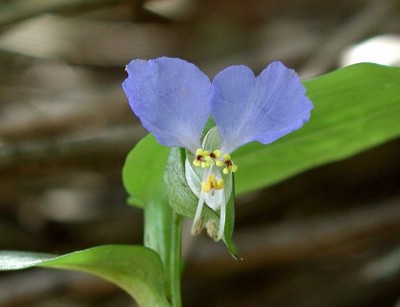 What an honor it would be to have a plant named after you. I was fortunate, many years ago when I worked in the USDA Fruit Laboratory in Maryland, to meet Dr. Magness, for whom ‘Magness’ pear was named. He had retired as chief of the Fruit Laboratory. And there was the Canadian farmer, John McIntosh, who discovered the tree that became his namesake variety two hundred years ago. ‘Macoun’ apple was bred here in New York, a deliberate hybrid of ‘McIntosh’ and ‘Jersey Black’ that was named, in 1923, after Canadian fruit grower W. T. Macoun. And so on.
What an honor it would be to have a plant named after you. I was fortunate, many years ago when I worked in the USDA Fruit Laboratory in Maryland, to meet Dr. Magness, for whom ‘Magness’ pear was named. He had retired as chief of the Fruit Laboratory. And there was the Canadian farmer, John McIntosh, who discovered the tree that became his namesake variety two hundred years ago. ‘Macoun’ apple was bred here in New York, a deliberate hybrid of ‘McIntosh’ and ‘Jersey Black’ that was named, in 1923, after Canadian fruit grower W. T. Macoun. And so on.How about having a weed as your namesake? I’d even take that, with reservations. One weed that comes to mind because it’s still spreading as if it was high summer is Asiatic dayflower. Actually, it’s quite an attractive plant, with arrow-shaped, succulent leaves that clasp the decumbent, fleshy stems. The genus, Commelina, is characterized by flowers with two prominent, sky blue petals that pay homage to two similarly prominent brothers, 18th century Dutch botanists Johann and Caspar Commelin.
Look closely at the flowers, though, and you’ll see that in addition to the two prominent, blue petals, each flower also has an insignificant, minuscule, white petal. There was also a third brother.
PAWPAW TALK & GLICKSTER VISIT
/13 Comments/in Gardening/by Lee A. Reich Deep in the hills of West Virginia, at the end of a steep, gravelly driveway, is where I found Glicksterus maximus. Sounds like a plant, doesn’t it? It’s not. It’s the self-ascribed nickname for Barry Glick of Sunshine Farm and Gardens (www.sunfarm.com), a mail-order nursery offering oodles of species and varieties of mostly herbaceous plants, many of them obscure and many of them native. I’d spoken with Barry, I’d planted his plants, and I’d sat on the receiving end of one of his entertaining and informative lectures, but I’d never visited his nursery/home. My own speaking engagement last week at the International Master Gardener’s Conference in Charleston, WV afforded me the opportunity for this visit.
Deep in the hills of West Virginia, at the end of a steep, gravelly driveway, is where I found Glicksterus maximus. Sounds like a plant, doesn’t it? It’s not. It’s the self-ascribed nickname for Barry Glick of Sunshine Farm and Gardens (www.sunfarm.com), a mail-order nursery offering oodles of species and varieties of mostly herbaceous plants, many of them obscure and many of them native. I’d spoken with Barry, I’d planted his plants, and I’d sat on the receiving end of one of his entertaining and informative lectures, but I’d never visited his nursery/home. My own speaking engagement last week at the International Master Gardener’s Conference in Charleston, WV afforded me the opportunity for this visit.Let’s cut right to the chase: Barry’s deepest affections go to one genus, Helleborus. And hellebores, as they are commonly called, were everywhere. (The plants are also called Christmas rose or Lenten rose although the blossoms do not really resemble roses and the plants do not necessarily bloom at Christmas or Lent.) Steep slopes beneath towering maples and oaks were blanketed with verdant carpets of thousands of hellebore plants. Many of these plants were seed plants for Barry’s breeding program. In addition to selling thousands of hellebores, Barry also has developed some new varieties.
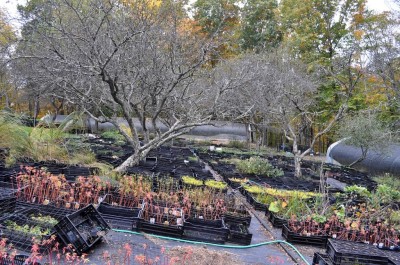 I had fun trying to identify some of the other plants tucked here and there all over the place, or lined out by the hundreds in pots. Ligularia was easily identified by its tall, straight, upright flower stalk even though its yellow flowers were long past. Rather than the familiar Ligularia ‘The Rocket’, Barry grows Ligularia sachalinensis. Fringetree (Chionanthus virginicus), a small tree whose branches burst with fringed, white blooms in spring, gracefully spread its branches; I brought home a small plant. As we walked up and down the hilly landscape past myriad plants, Barry called out their botanical names
I had fun trying to identify some of the other plants tucked here and there all over the place, or lined out by the hundreds in pots. Ligularia was easily identified by its tall, straight, upright flower stalk even though its yellow flowers were long past. Rather than the familiar Ligularia ‘The Rocket’, Barry grows Ligularia sachalinensis. Fringetree (Chionanthus virginicus), a small tree whose branches burst with fringed, white blooms in spring, gracefully spread its branches; I brought home a small plant. As we walked up and down the hilly landscape past myriad plants, Barry called out their botanical namesOne particularly attractive tree that I found impossible to identify was a mature sweetgum (Liquidambar styraciflua). Rather than sweetgum’s characteristic, five-pointed, star-shaped leaves, Barry’s tree, the variety ‘Rotundifolia’, had leaves with friendly-looking, rounded lobes. This variety is sterile, so also couldn’t be identified by the species rounded, spikey fruits commonly known by such names as “gumballs,” “burr balls”, “bommyknockers”, or “conkleberrys.”
——————————————-
We can’t just leave hellebores hanging a few paragraphs back. I also am a big fan of most of this genus, and am the proud grower, for 8 years now, of some of Barry’s creations. One asset of hellebores, mentioned previously, is their verdant foliage; I didn’t mention, though, that the leaves stay green all winter. This far north, I value anything green in our mostly achromatic winter landscape.
 Another plus for this genus is that deer leave the plants alone. And that the plants thrive in partial shade. And that they self-sow to make new seedlings as well as spread vegetatively. They do so with enough restraint to never become a bother or, worse, invasive.
Another plus for this genus is that deer leave the plants alone. And that the plants thrive in partial shade. And that they self-sow to make new seedlings as well as spread vegetatively. They do so with enough restraint to never become a bother or, worse, invasive.While the flowers do not look like rose blossoms, they are beautiful, in colors from white to white suffused with purple to purple, and sometimes pale green.Wait, that’s not all! The flowers start blooming very early in spring, typically in March in my garden, and then continue to bloom for weeks and weeks.
———————————————
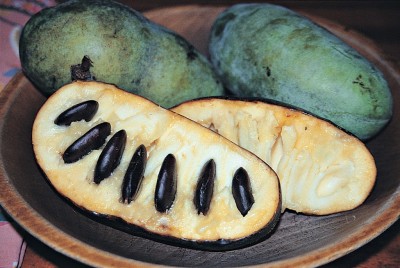 One of my lecture topics at the master gardener conference was “Landscaping with Fruit,” and one of the premier dual-purpose plants that I touted was pawpaw (Asimina triloba). The tree has a neat, pyramidal form and all season long sports large, lush, healthy green leaves that lend a tropical air to the landscape. It’s a tree that you can plant (plant two, for cross-pollination), give some care to get it growing, and then year after year harvest fruit without giving a second thought to pests or pruning. Even deer usually leave mature trees alone.
One of my lecture topics at the master gardener conference was “Landscaping with Fruit,” and one of the premier dual-purpose plants that I touted was pawpaw (Asimina triloba). The tree has a neat, pyramidal form and all season long sports large, lush, healthy green leaves that lend a tropical air to the landscape. It’s a tree that you can plant (plant two, for cross-pollination), give some care to get it growing, and then year after year harvest fruit without giving a second thought to pests or pruning. Even deer usually leave mature trees alone. 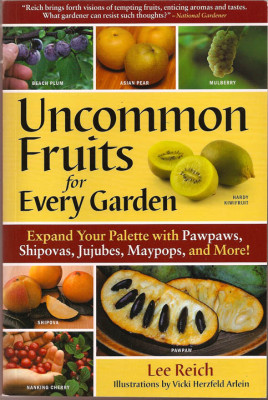 In addition to those lush leaves, pawpaw has other tropical aspirations. It is the northernmost member of the mostly tropical custard apple family. Each flower is a multiple ovary so can yield a cluster of up to nine fruits, similar to clusters of bananas except that pawpaws are shaped like and about the size of mangoes.
In addition to those lush leaves, pawpaw has other tropical aspirations. It is the northernmost member of the mostly tropical custard apple family. Each flower is a multiple ovary so can yield a cluster of up to nine fruits, similar to clusters of bananas except that pawpaws are shaped like and about the size of mangoes.Most tropical is the flesh itself of this cold-hardy, native fruit. Pawpaw flesh is creamy and yellow, like banana. What’s more, it has flavor that also is similar to banana along with some mango, pineapple, and avocado mixed in; or vanilla custard; or creme brulee.
Pawpaw trees shed their tropical aspirations in autumn, about now, when the leaves turn a clear, bright yellow and then drop. That’s also when the fruit ripens; I’m presently inundated with this easy-to-grow “tropical” fruit.
(I devote a whole chapter to pawpaw in my book Uncommon Fruits for Every Garden.)
GOODBYE TOMATOES, HELLO NASHI
/1 Comment/in Gardening/by Lee A. Reich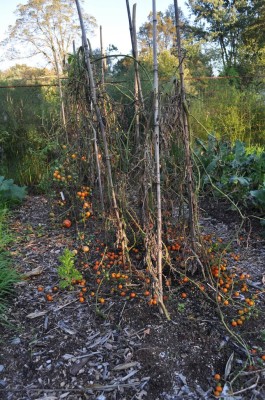 One more sandwich of sliced tomatoes laid on home-made bread and topped with cheddar cheese, warmed until melted, and I’ll close the garden gate on fresh tomatoes for the year. Tomato season used to end more dramatically: The four years that I gardened in Wisconsin, a heavy frost would descend on the garden some night about the third week in September. Morning would present a scene of blackened, dead tomato, cucumber, and pepper plants. The same thing used to happen here, only a little later in autumn.
One more sandwich of sliced tomatoes laid on home-made bread and topped with cheddar cheese, warmed until melted, and I’ll close the garden gate on fresh tomatoes for the year. Tomato season used to end more dramatically: The four years that I gardened in Wisconsin, a heavy frost would descend on the garden some night about the third week in September. Morning would present a scene of blackened, dead tomato, cucumber, and pepper plants. The same thing used to happen here, only a little later in autumn.For many years now, killing frosts have arrived late, so much so that cool weather and short days sap the vitality from summer vegetables before frost arrives. The plants peter out so I have no qualms about clearing them out of the garden before they are dead. As a matter of fact, they look so forlorn that I’m anxious to clear them away and neaten up the garden.
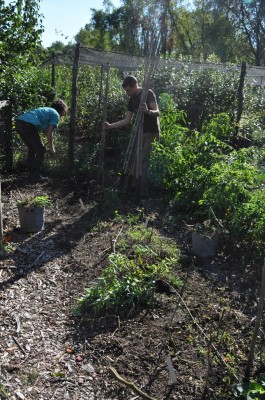 Cleanup is especially important with tomatoes because a few diseases, such as early blight and leaf spot diseases, wait out winter on plant residues to infect next year’s plants. I clean up every bit of stem, leaf, and fruit possible, hand picking to begin with and then finally giving each bed a light raking to gather up remaining debris. With a garden knife, I cut into the ground around the base of each plant to make it easy to remove the stem and largest roots. Small roots stay in the soil, decomposing to become humus and to leave behind large and small channels for air and water movement. All that spent tomato stuff goes into the compost pile where time and temperature do their job defusing pathogens and creating rich compost.
Cleanup is especially important with tomatoes because a few diseases, such as early blight and leaf spot diseases, wait out winter on plant residues to infect next year’s plants. I clean up every bit of stem, leaf, and fruit possible, hand picking to begin with and then finally giving each bed a light raking to gather up remaining debris. With a garden knife, I cut into the ground around the base of each plant to make it easy to remove the stem and largest roots. Small roots stay in the soil, decomposing to become humus and to leave behind large and small channels for air and water movement. All that spent tomato stuff goes into the compost pile where time and temperature do their job defusing pathogens and creating rich compost. Just to make sure that pest problems are minimized next year, and to enrich and protect the ground, I cover each bed with an inch depth of finished compost from piles built last year. Disease spores can’t get up through the compost blanket. And then, to further limit pest problems, next year’s tomatoes go in a different bed than this year’s tomatoes.
—————————————-
Even with the declining tomatoes and other summer vegetables, the garden generally doesn’t look forlorn. Beds of late green beans, sweet corn, and squash that were cleared, cleaned, and composted over the past few weeks look neat and weed-free. To me, something like the zen gardens at Ryōan-ji, except with compost and straight lines instead of neatly raked gravel. Grassy blades of oats are sprouting with all the youthful exuberance of spring in beds that were readied before the end of September. And long before summer vegetables started to wane, I snuck autumn vegetables into the garden, so some beds are now lush with radishes, arugula, lettuce, cabbage, and other greenery that thoroughly enjoys this cool, wet weather.
——————————————
Butterscotch on a tree, that’s what Chojuro pear tastes like. Juicy butterscotch, because an explosion of juice fills your mouth with each bite,
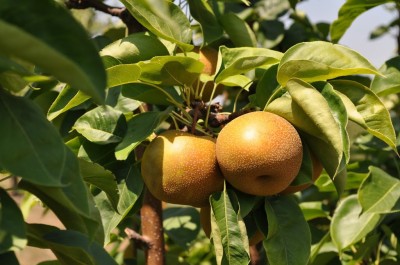 Chojuro is one of a few Asian pears, also called nashi, that I grow; it’s my favorite as far as productivity and flavor, my others being Yoinashi, Yakumo, and Seuri-Li. Because they are generally round and crunchy, Asian pears are also sometimes called apple pears or salad pears. They have a long history in Asia, and over a thousand varieties exist.
Chojuro is one of a few Asian pears, also called nashi, that I grow; it’s my favorite as far as productivity and flavor, my others being Yoinashi, Yakumo, and Seuri-Li. Because they are generally round and crunchy, Asian pears are also sometimes called apple pears or salad pears. They have a long history in Asia, and over a thousand varieties exist.My pears were planted 10 years ago, actually not planted but grafted on existing rootstocks to replace other, less satisfactory varieties. The rootstocks are dwarfing and the plan was to train them as a row of espaliers en arcure, that is with successive tiers of branches gently arching in curves to meet those of neighboring pear plants, all sitting in a row atop a low wall. But deer soon discovered the plants, which became a smorgasbord for which the deer didn’t even have to bend down to enjoy.
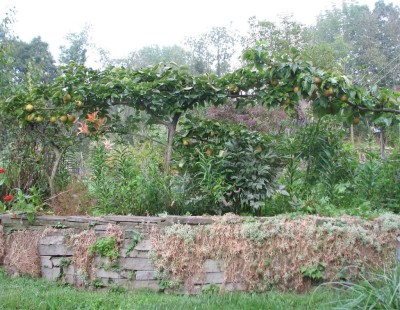 The deer problem was eventually solved but the plants were not en arcure anymore. I could have lopped everything back to just above the grafts and started again but lacked the heart to do it because the trees were, by then, bearing fruits. So now I have an arcure-esque espaliers laden with fruit. And especially laden is the Chojuro tree, every year.
The deer problem was eventually solved but the plants were not en arcure anymore. I could have lopped everything back to just above the grafts and started again but lacked the heart to do it because the trees were, by then, bearing fruits. So now I have an arcure-esque espaliers laden with fruit. And especially laden is the Chojuro tree, every year.Asian pears differ from the more common European pears in a number of ways. They are generally easier to grow. With large, healthy leaves, they tend to be more decorative. They bear more heavily and at a younger age, so much so that you have to be careful not to let plants on dwarfing rootstocks bear too much too young and runt out. And while European pears must be harvested before they are ripe, then ripened off the trees, Asian pears don’t taste at their best until they are dead ripe on the tree.
Even then, they don’t taste at their very best if the trees overbear, which they are wont to do. So beginning in June, and a few more times through summer, I kept pinching off enough fruits so that eventually remaining fruits were a couple of inches apart. It was worth it for the crunchy, juice-laden, butterscotch-flavored Chojuros.


